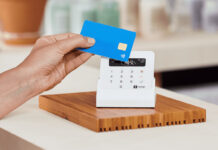The current climate has increased demand for EPOS systems

WHILE 2020 may not have been a big growth year for many aspects of the licensed trade, one in particular has grown exponentially: cashless payments.
Use of contactless payment – whether by card or app – has been growing steadily over the past few years. But with the coronavirus pandemic having encouraged people all over the world to cut physical contact wherever they can, the licensed trade may be entering a new age of EPOS systems and apps.
As Lesley Corr of EPOS provider Payfacto put it: “As customers return to dining out, they are particularly concerned about their safety and look to [venues] which offer a high standard of hygiene practices.
“This includes technology that helps to reduce contact as much as possible.”
Henry Seddon of EPOS firm Access Hospitality said that a survey the company conducted in February of this year found that hospitality companies already had an appetite for introducing new EPOS systems, with functionality such as ‘menu engineering’ software, analytics and reporting, stock management and reservations all being identified as priorities.
“Move forward to September and many of those plans have been fast-tracked after several months of closure,” said Seddon.
“As card and contactless payments became more common, estimates had predicted that the UK would become a cashless society by 2043.
“That now seems a conservative timescale as the move to contactless has accelerated significantly over the last six months.
“The risk of infection from many people handling cash became very real and operators must have technology in place to respond to these fears and reduce the number of cash payments taken, improving safety for staff and customers.
“Even the most change-averse customers are now demanding cash-free payment options and operators must react.”
And Paul Steven of ACR EPOS Systems said handheld ordering devices have been proving particularly popular with trade customers as they “allow less staff to be working on the floor and less staff going behind the bar and kitchen areas”.
“I am surprised that more customers haven’t embraced the new technology considering the times we are living in,” said Steven.
The current climate has perhaps driven some immediate demand for EPOS and apps, but companies pointed out that, long-term, the advantages extend to more than just alleviating concerns over COVID transmission.
Richard Carter of OrderPay said that while there’s “no doubt that technology is helping to tackle some of the current challenges in the on-trade”, operators are also realising there are other operational advantages to these systems.
“We anticipate that over the next 12 months, operators will get to grips with the fact that they can take a variety of approaches to driving sales that focus on providing a seamless customer experience whether customers are ordering ahead from a smartphone or are purchasing in-venue,” said Carter.
“There are numerous ways that tech can not only help the sector rebuild after COVID-19, but can also help retain customer loyalty, drive footfall and sustain profitability.”























